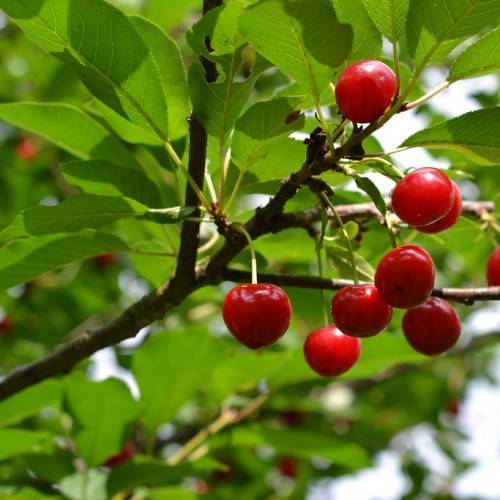
sour cherry
Prunus 'North Star'
Cycle:
Perennial
Watering:
Average
Hardiness Zone:
4 - 8
Flowers:
Flowers In Spring
Sun:
Full sun
Fruits:
Fruits Ready In Fall
Edible:
Yes
Leaf:
Yes
Growth Rate:
High
Maintenance:
Low
Drought Tolerant:
Yes
Care Level:
Medium
watering
When watering sour cherry trees (Prunus 'North Star'), it's important to keep the soil evenly moist during the growing season. Water in the morning, just after sunrise, so it can dry off before the evening. It's best to thoroughly soak the soil around the base of the tree rather than just give it a light sprinkle. Sour cherries typically need around 1-2 inches of water per week. Depending upon the soil and weather conditions, you may need to adjust the amount of water applied. Make sure the soil never becomes too soggy or dry; this will help discourage disease and nutrient deficiencies.
sunlight
Sour cherries (Prunus 'North Star') prefer full sun, and need at least 6 hours of direct sunlight daily for optimal growth. They can tolerate light shade, but may not produce as much fruit as when grown in full sun. For best results, provide the plant with at least 8 hours of sunlight a day throughout spring, summer, and autumn. In northern latitudes, covering or shade cloth may be required in late spring and summer to protect the plant from the intense midday sun. The plant should be shielded from extreme or concentrated afternoon sunlight and heat that may dry out the soil and damage the leaves and branches. In winter, Sour cherry should be exposed to at least 4 hours of sunlight for healthy growth.
pruning
Pruning of Sour Cherry (Prunus 'North Star') should be done every mid-late winter. The timing of pruning is important for Sour Cherry, as it blooms on last year's growth. Therefore pruning should be done before the tree breaks dormancy. aim to prune about 1/3 of the previous year's growth and remove any dead, diseased, or damaged wood. Prune branches that are crossing or that interfere with air and light circulation. Remove any suckers to encourage good fruit production and health.
